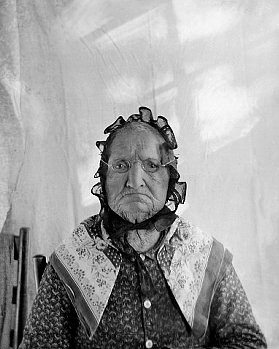Westside Toastmasters is located in Los Angeles and Santa Monica, California
Chapter 3
THE ALLURE OF HAPPY EXPRESSIONS
Smiling is universally recognized as a sign of happiness. Smiles come in a wide variety ranging from signalling appeasement to that of the playful child. The impact this gesture has on people's attitudes is amazingly positive and it influences their response to you.Consider the enigmatic smile of the Mona Lisa, the demure smile of the late Princess Diana, and the enchanting smile of Julia Roberts. What can one learn from a smile? What have evolutionary, cross-cultural and social psychological research contributed to our understanding of the smile? Is it preposterous to suggest there is (or ever could be) a science of smiling?
Smiles may be natural or faked. The broad, genuine, expressive, spontaneous smile can be defined physiologically in terms of what muscles do to different parts of the face lips, cheeks or eyes. There is also the wry, miserable smile, often lopsided, that indicates recognition of the random fluctuations in life. The polite smile - often more like a grimace - is as much a sign of embarrassment as happiness.
Surprisingly the smiling or laughing face is often not very different from the howling or tearful face. Some people - possibly women more than men - cry with joy. People sometimes laugh as a response to shock, or when embarrassed. Funeral wakes are often (sometimes unpredictably) characterized by laughter.
Genuine laughter increases breathing, while lowering blood pressure and heart rate. Crying, as uniquely human as laughing, may accompany laughter and may be as much a sign of joy and relief as of shock or sadness.
The "science of smiling" as such was initiated by Charles Darwin. He noticed that the cause, consequences and manifestations of smiling is universal whereas many other nonverbal of body language behaviors (like gestures or touch) differ between cultures and are therefore probably learnt. Babies born blind smile like sighted infants. We begin smiling at five weeks: babies learn that crying gets attention of adults but smiling keeps it.
Darwin also observed that smiling and laughter often occurred together and therefore had similar origins. Happiness, he thought, was similar to amusement. Smiling, it is argued is the outward manifestation of happiness and serves to begin to connect us to others. We are "prewired" to connect with others via this system. Thus it has been shown that people who cannot smile, because of facial paralysis, have more difficulty in social relationships.
However there maybe culture differences in rules of smiling: When etiquette dictates it is appropriate to smile or not. For instance it has been demonstrated that in the United States, people smile more in the south than the north. Many east Asians cover their mouth when smiling. An English mannerism, particularly for those skewing more to the upper class is maintaining a "stiff upper lip" and not appearing emotional. They tend to keep their teeth hidden and pull their mouth sideways rather than up due to cultural preferences.
We know that, on average, women smile more than men. At two months old we can observe that baby girls smile more than baby boys. We know that powerful men smile less than less powerful men. Also that smiling is linked to higher levels of the hormone testosterone:
There is also physiological evidence that smiling has specific positive biological effects. This is even truer of laughter and is evidence of a feedback loop. Smiling has hormonal and physiological consequences which make us feel better and want to smile even more. Smiling self medicates and can heal.
The first recorded scientific studies into smiling were in the early part of the nineteenth century when French scientist Guillaume Duchenne de Boulogne used electrodiagnostics and electrical stimulation to distinguish between the smile of real enjoyment and other kinds of smiling. He analyzed the heads of people executed by guillotine to study how the face muscles worked. He pulled face muscles from many different angles to catalogue and record which muscles caused which smiles.
He discovered that smiles are controlled by two sets of muscles: the zygomatic major muscles, which run down the side of the face and connect to the corners of the mouth and the orbicularis oculi, which pull the eyes back. The zygomatic majors pull the mouth back to expose the teeth and enlarge the cheeks, while the orbicularis oculi make the eyes narrow and cause 'crow's feet'. These muscles are important to understand because the zygomatic majors are consciously controlled - in other words, they are used to produce false smiles of fake enjoyment to try to appear friendly or subordinate. The orbicularis oculi at the eyes act independently and reveal the true feelings of a genuine smile. So the first place to check the sincerity of a smile is to look for wrinkle lines beside the eyes.
Natural vs. Synthetic?
Psychologists have made many distinctions regarding the character of human smiles but at the most fundamental level the distinction has been between genuine vs. fake smiles. Fake smiles are used for various purposes often to pretend to show enjoyment, or sociability or agreement. These are easily noticeable because they involve the mouth and not the eyes. Technically we can define the physiological difference between a genuine and fake smile: two muscles are involved the zygomatic major and orbicularis oculi. Real smiles involve both muscles and fake smiles the former but not the latter. Fake smiles involve the mouth more than the eyes: they are, in a sense only half the story.
In the smile containing an element of real delight, not only are the lip corners pulled up, but the muscles around the eyes are contracted, while in false simulated smiles just smiling lips are involved.



Which smile is fake? False smiles pull back only the mouth, real smiles pull back both the mouth and eyes
Scientists can distinguish between genuine and fake smiles by using a coding system called the Facial Action Coding System (FACS), which was devised by Professor Paul Ekman of the University of California and Dr Wallace V Friesen of the University of Kentucky. Genuine smiles are generated by the unconscious brain, which means they are automatic. When you feel pleasure, signals pass through the part of your brain that processes emotion, making your mouth muscles move, your cheeks raise, your eyes crease up and your eyebrows dip slightly.
Lines around the eyes can also appear in intense counterfeit smiles and the cheeks may bunch up, making it look as if the eyes are contracting and that the smile is genuine. There are signs that distinguish these smiles from genuine ones. When a smile is authentic, the fleshy part of the eye between the eyebrow and the eyelid - the eye cover fold - moves downwards and the end of the eyebrows dip slightly.
Smiling As A Submission Signal
Smiling and laughing are universally considered to be signals that show a person is happy. We cry at birth, begin smiling at five weeks and laughing starts between the fourth and fifth months. Babies quickly learn that crying gets our attention - and that smiling keeps us there. Recent research with our closest primate cousins, the chimpanzees, has shown that smiling serves an even deeper, more primitive purpose.
To show they're aggressive, apes bare their lower fangs, warning that they can bite. Humans have the same gesture when they become aggressive by dropping or thrusting forward the lower lip because its main function is as a sheath to conceal the lower teeth. Chimpanzees have a smile that is an appeasement face, where one chimp shows submission to another dominant chimp. Reflecting on our own behavioral parallels we would usually interpret this as a look of pleasure ... not correct! With this chimp smile known as a 'fear face' the lower jaw opens to expose both the upper and lower teeth - which are closed - and the corners of the mouth are pulled back and down, resembling the human smile though the underlying emotion is different. The 'fear face' is submissive, communicating 'I am no threat to you in the least'.

A chimpanzee 'fear face'
In humans, smiling serves much the same purpose as with other primates. It can tell another person you are non-threatening and asks them to accept you on a personal level. Lack of smiling explains why many dominant individuals, such as Russia's Vladimir Putin or Iran's Ali Khamenei always seem to look grumpy or aggressive and are rarely seen smiling - they simply don't want to appear in any way submissive.
And research in courtrooms shows that an apology offered with a smile incurs a lesser penalty than an apology without one. Cash does speak!

Happy, submissive or about to tear you limb from limb?
Why Smiling Is Contagious
There is a lot of evidence of body language "mirroring". We automatically copy the facial expressions of others. We reciprocate and in social groups it can be contagious. People respond to, and evaluate, those who smile differently and more positively than those who do not, even if a person displays a fake smile. "Laugh, and the world laughs with you; cry and you cry alone."
This sets up a virtuous cycle for the smiler and a self-defeating cycle for the non-smiler. Thus in sales and hospitality and negotiation situations the person who first smiles increases the possibility of the other person(s) smiling which increased trust and likability, making others more cooperative and helpful. In the opening stages of business or legal negotiating where people are sizing each other up, more positive responses are produced on both sides of the table that gives more successful outcomes and higher sales ratios. Smiling naturally helps bond people together better.
Professor Ulf Dimberg at Uppsala University, Sweden, conducted an experiment that revealed how your unconscious mind exerts direct control of your facial muscles. Using equipment that picks up electrical signals from muscle fibres, he measured the facial muscle activity on 120 volunteers while they were exposed to pictures of both happy and angry faces. They were told to make frowning, smiling or expressionless faces in response to what they saw. Sometimes the face they were told to attempt was the opposite of what they saw - meeting a smile with a frown, or a frown with a smile. The results showed that the volunteers did not have total control over their facial muscles. While it was easy to frown back at a picture of an angry man, it was much more difficult to pull a smile. Even though volunteers were trying consciously to control their natural reactions, the twitching in their facial muscles told a different story - they were mirroring the expressions they were seeing, even when they were trying not to.
Professor Ruth Campbell, from the University College London, postulates there is a 'mirror neuron' in the brain that triggers the part responsible for the recognition of faces and expressions and causes an instant mirroring reaction. In other words, whether we realize it or not, we automatically copy the facial expressions we see.
This is why regular smiling is important to have as a part of your body language repertoire, even when you don't feel like it, because smiling directly influences other people's attitudes and how they respond to you.
Practicing A Phony Smile
Most people cannot consciously differentiate between a fake smile and a real one, and most of us are content if someone is simply smiling at us - regardless of whether it's real or false. Because smiling is such a disarming gesture, most people wrongly assume that it is a favorite of liars. Research by Paul Ekman showed that when people deliberately lie, most, especially men, smile less than they usually do. Ekman believes this is because liars realize that most people associate smiling with lying so they intentionally decrease their smiles. A liar's smile comes more quickly than a genuine smile and is held much longer, almost as if the liar is wearing a mask.
A false smile often appears stronger on one side of the face than the other, as both sides of the brain attempt to make it appear genuine. The half of the brain's cortex that specializes in facial expressions is in the right hemisphere and sends signals mainly to the left side of the body. As a result, false facial emotions are more pronounced on the left side of the face than the right. In a real smile, both brain hemispheres instruct each side of the face to act with symmetry.

When liars lie, one side of the smile is more pronounced than the other
The Guilty Smile Less
In the past it had been assumed by law enforcement officers that liars increased their frequency of smiling when they were lying or under pressure. Analysis of videos of people who were intentionally told to lie showed the opposite - when the liars lied, they smiled less or not at all, regardless of culture. People who were innocent and telling the truth increased their smiling frequency when being honest. Because smiling is rooted in submission, the innocent people were attempting to appease their accusers while the professional liars were reducing their smiles and other body signals. It's the same as when a police car pulls up next to you at traffic lights - even though you haven't broken the law, the presence of the police is enough to make you feel guilty and start smiling. This highlights how fake smiling is controlled and should always be considered in the context of where it occurs.
Common Types of Smiles
What follows is a summary and an analysis of the common types of smiles that you're likely to see every day:
1. The Tight Lipped Smile
Stretch your lips in a straight line across your face without exposing your teeth and think of the Mona Lisa, whose smile implies concealed thoughts, secrets, or a restrained attitude. That's what's known as the tight-lipped smile.
One study suggests women generally interpret this smile as a sign of rejection. It's a favorite of women who don't want to reveal that they don't like someone for reasons unspecified. A woman might say of another woman, 'She's a very capable woman who knows what she wants', followed by a tight-lipped smile, covering what she was really thinking. Pick up business magazines or many annual corporate reports and you may be greeted by the thin lipped smile of a professional chief executive talking up the prospects of their company or high potential of their business concepts they are nuturing ... without truly disclosing the underlying essence.

The tight lipped smile, a secret he won't be sharing with you?

Would I lie to you?
2. The Lop-Sided Smile
When your muscles pull the sides of your mouth in opposite directions, one side going up and the other going downwards, you've got yourself in a twist. What you're doing is showing opposite emotions on either side of your face and the observer has to figure out what this lop-sided smile is conveying - in Western culture this type of smile can be deliberate signaling sarcasm, embarrassment, or irony.
In a lop-sided smile, one side of your mouth is moving upward in amusement while the other side's pulling down in restraint. Subconsciously, when your mouth seeks this position you're showing both your pleasure and your pain. Harrison Ford and the late Princess Diana both mastered the gesture of the lop-sided smile.
The gesture elicits protective responses in others. The side of the mouth going downward indicates sadness, anxiety, or another negative emotion. The side going upward shows that the person's not angry - had he been, both sides of the mouth would turn down. The gesture is softened by the upward turn of the lip, making the gesture non-threatening.

Do we sense sarcasm here?

There are exceptions. For actor DB Sweeney this is his normal smile - we assume sarcasm isn't his norm.
3. The Drop Jaw Smile
This practiced smile, in which the lower jaw simply releases downwards, is a favorite of politicians, movie stars, and celebrities. Knowing how contagious laughter is, a person wanting to elicit positive reactions from his adoring public lets his jaw drop, suggesting playfulness and amusement. Laughter is more contagious than just smiling, so the next time you're in company and want to induce a sense of playfulness in your listeners, apply the drop-jaw smile. By looking unthreatening and as if you're laughing, the others pick up on the feeling too.

Drop jaw smile with an attempt to fake smiling eyes

A drop jaw smile where only the jaw is lowered to feign happiness
4. The Turned Away Smile
Turn your head down and away while looking upwards with your lips in a tight lipped smile, and you can capture the hearts of many. By doing so you look younger, playful, and secretive - a winning combination.
Most men melt when a woman smiles coyly in their direction and women also aren't immune to the power of the smile that encapsulates both openness and shyness. Parental instincts rise, making the recipient of this smile want to shield and nurture the person gazing at him with this captivating look.
According to Charles Darwin, the action of turning the head away from another person while looking at him and smiling creates a 'hybrid expression', one that is composed of two opposite meanings. The smile signals welcome, whereas the motion of turning away conveys avoidance. The tension that's created by these two opposing actions is often quite appealing and more powerful than its individual parts.



Princess Diana's sideways, looking up smile had a powerful effect on both men and women
This smile made men want to protect her, and made women want to be like her. Not surprisingly, this smile is a regular in women's courtship repertoire for attracting men as it's read by men as a seductive, and powerful, 'come-on' signal.
And ... A Diametric Opposite
The opposite to pulling up the corners of the mouth to show happiness is pulling both corners downward to show what we'll call the down mouth expression. This is done by the person who feels unhappy, despondent, depressed, angry or tense. Unfortunately, if a person holds these negative emotions throughout their lifetime, the corners of the mouth will set into a permanent down position.
In later life, this can give a person an appearance similar to a bulldog. Studies show that we stand further away from people who have this expression, give them less eye contact and avoid them when they are walking towards us. If you realize this expression has become a regular in your repertoire, practice smiling regularly which will help you avoid looking like an angry canine in later life along with making you feel more emotionally positive.



The down mouth expression can become a permanent facial feature. We instinctively tend to stay away from those with this expression.
Why Laughter Is Good Medicine
As with smiling, when laughter is incorporated as a permanent part of who you are, it attracts friends, improves health and extends life. When we laugh, every organ in the body is affected a positive way. Our breathing quickens, which exercises the diaphragm, neck, stomach, face and shoulders. Laughter increases the amount of oxygen in the blood, which not only helps healing and improves circulation, it also expands the blood vessels close to the skin's surface. This is why people go red in the face when they laugh. It can also lower the heart rate, dilate the arteries, stimulate the appetite and burn up calories.
Neurologist Henri Rubenstein found that one minute of solid laughter provides up to 45 minutes of subsequent relaxation. Professor William Fry at Stanford University reported that 100 laughs will give your body an aerobic workout equal to that of a ten-minute session on a rowing machine. Medically speaking, this is why a damn good laugh is damn good for you.
Why You Should Take Laughter Seriously
Research shows that people who laugh or smile, even when they don't feel especially happy, make part of the 'happy zone' in the brain's left hemisphere surge with electrical activity. In one of his numerous studies on laughter, Richard Davidson, professor of psychology and psychiatry at the University of Wisconsin in Madison, hooked subjects up to EEG (electroencephalograph) machines, which measure brain wave activity, and showed them funny movies. Smiling made their happy zones click wildly. He proved that intentionally producing smiles and laughter moves brain activity towards spontaneous happiness.
Arnie Cann, professor of psychology at the University of North Carolina, discovered that humor has a positive impact in counteracting stress. Cann led an experiment with people who were showing early signs of depression. Two groups watched videos over a three-week period. The group that watched comedy videos showed more improvement in their symptoms than did a control group that watched non-humorous videos. He also found that people with ulcers frown more than people without ulcers. If you catch yourself frowning' practice putting your hand on your forehead when you talk, to train yourself out of it.
Why Our Chimp Cousins Cannot Laugh and Talk
Robert Provine, professor of psychology at the University of Maryland found that human laughter is different from that of our primate cousins. Chimpanzee laughter is a breathy panting vocalization with a sound and cadence reminiscent of a handsaw cutting wood. Only one sound can be made per outward or inward breath and it's this one-to-one ratio between breath cycle and vocalization that makes it impossible for most primates to speak. When humans began walking upright, it freed the upper body from weight-bearing functions and allowed substantially improved breath control. People can modulate an exhalation to produce language and laughter. Chimps have the mental bandwidth to handle linguistic concepts, but they don't have the vocal agility to physically produce the sounds of language. Humans have a wide range of freedom in the sounds we make, including speech and laughter, as a direct result of walking upright.
How Humor Heals
Laughter stimulates the body's natural painkillers, those 'feel good' enhancers known as endorphins, helping to relieve stress and heal the body. When Norman Cousins was diagnosed with the debilitating illness ankylospondylitis, the doctors told him they could no longer help him and that he would live in excruciating pain before he died. Cousins checked into a hotel room and watched every old school funny movie he could find: the Marx Brothers, Airplane and The Three Stooges, etc. He watched and re-watched them over and over, laughing as hard and loud as he could. After six months of this self-inflicted laughter therapy, the doctors were amazed to find that his illness had been completely cured - the disease was gone! This amazing outcome led to the publishing of Cousins' book, Anatomy of an Illness, and the start of massive research into the function of endorphins. Endorphins are chemicals released from the brain when you laugh. They have a similar chemical composition to morphine and heroin and have a tranquilizing effect on the body, while building the immune system. This explains why happy people rarely get sick and miserable but complaining people often seem to be ill.
Laughing Till You Cry
Laughter and crying are closely linked from a psychological and physiological standpoint. Think of the last time someone told you a joke that made you buckle up with laughter and you could hardly control yourself. How did you feel afterwards? You felt a tingling sensation all over, right? Your brain released endorphins into your system that gave you what was once described as a 'natural high' and is the same experience that drug addicts get when they take dope. People who have trouble with laughing at the tough things in life often turn to drugs and alcohol to achieve the same feeling that endorphin-induced laughter produces. Alcohol loosens inhibitions and lets people laugh more, which releases endorphins. This is why most well-adjusted people laugh more when they drink alcohol, while unhappy people become even more despondent or even violent.
One of the reasons we are attracted to smiling and laughing faces is because they can actually affect our autonomic nervous system. We smile when we see a smiling face and this releases endorphins into our system. If you are surrounded by miserable, unhappy people you are also likely to mirror their expressions and become glum or depressed. Working in an unhappy environment is detrimental to your health.
How Jokes Work
The basis of most jokes is that, at the punch line, something disastrous or painful happens to someone. In effect, the unexpected ending 'frightens' our brain, and we laugh with sounds similar to a chimp warning others of imminent danger. Even though we consciously know that the joke is not a real event, our laugh releases endorphins for self-anesthesia as if the joke was a real event. If it was a real event, we may go into crying mode and the body would also release its endorphins. Crying is often an extension of a laughing bout and is why, in a serious emotional crisis, such as hearing about a death, a person who cannot mentally accept the death may begin laughing. When the reality hits, the laughter turns to crying.

The evolutionary origin of human laughter is as a primate warning signal
The Laughter Room
In the 1980s, several American hospitals introduced the concept of the 'Laughter Room'. Based on Norman Cousins' experiences and other laughter research by Dr Patch Adams, they allocated a room and filled it with joke books, comedy films and humorous tapes, and had regular visits from cornedians and clowns. Patients were then exposed to 30- to 60-minute sessions each day. The result was impressive - a dramatic improvement in patient health and shorter average hospitalization time per patient. The Laughter Rooms also showed a decrease in the number of painkillers required by those in pain and patients became easier to deal with. So you could say that the medical profession now take their laughter seriously.
Smiles and Laughter Are a Way of Bonding
In the absence of stimulating media such as video, radio, or books, psychology professor Robert Provine found that laughing was more than 30 times as likely to occur in social settings with other people than when a person was in a solitary setting. Laughter, he found, has less to do with jokes and funny stories and more to do with building relationships. He found that only 15% of our laughter has to do with jokes. In Provine's studies, participants were more likely to speak to themselves when alone than they were to laugh.
Videos were taken of participants watching a humorous video clip in three different situations: alone, with a same-sex stranger, and with a same-sex friend. Even though no differences existed between how funny the participants felt the video clip was, those who watched the comical video clips alone laughed significantly less than did those who watched the video clip with another person present, whether it was a friend or a stranger. The frequency and time spent laughing were significantly greater in both situations involving another person than when the participant was alone. Laughter occurred much more frequently during social interaction. These suits demonstrate that the more social a situation is, the more often people will laugh and the longer each laugh will last.
Smiling Advice For Women
Marvin Hecht's and Marianne La France's research at Boston University has revealed how subordinate people smile more in the presence of dominant and superior people, in both friendly and unfriendly situations, whereas superior people will smile only around subordinate people in friendly situations.
This research shows that women smile far more than men in both social and business situations, which can make a woman appear to be subordinate or weak in an encounter with unsmiling men. Some people claim that women's extra smiling is the result of women historically being placed by men into subordinate roles, but other research shows that by the age of eight weeks, baby girls smile far more than baby boys, so it's probably inborn as opposed to learned. The likely explanation is that smiling fits neatly into women's evolutionary role as pacifiers and nurturers. It doesn't mean a woman can't be as authoritative as a man; but the extra smiling can make her look less authoritative.
Social psychologist Dr Nancy Henley, at UCLA, described a woman's smile as 'her badge of appeasement' and it is often used to placate a more powerful male. Her research showed that, in social encounters, women smile 87% of the time versus 67% for men and that women are 26% more likely to return smiles from the opposite sex. An experiment using 15 photographs of women showing happy, sad and neutral faces were rated for attractiveness by 257 respondents. The women with the sad expressions were considered the least attractive. Pictures of unsmiling women were decoded as a sign of unhappiness while pictures of unsmiling men were seen as a sign of dominance. The lessons here are for women to smile less when dealing with dominant men in business or to mirror the amount of smiling that men do. And if men want to be more persuasive with women, they need to smile more in all contexts.
Laughter In Love
Robert Provine found that in courtship, it's also women who do most of the laughing and smiling, not men. Laughing in these contexts is used as a way of determining how successfully a couple is likely to bond in a relationship. Simply put, the more he can make her laugh, the more attractive she will find him. This is because the ability to make others laugh is perceived as a dominant trait and women prefer dominant males, while males prefer subordinate females. Provine also found that a subordinate person will laugh to appease a superior person and the superior person will make subordinates laugh - but without laughing himself - as a way of maintaining his superiority.
This explains why having a sense of humor is near the top of women's priority list of what they look for in a man. When a woman says 'He's such a funny guy - we spent the whole night laughing together' she usually means that she spent the night laughing and he spent the night making her laugh.
On a deeper level, men seem to understand the attraction value of being humorous and spend much of their time with other men competing to tell the best joke to enhance their own status. Many men also become annoyed when one man dominates the joke-telling, especially when women are present and are also laughing. Men are likely to think the joke-teller is not only a jerk but he isn't particularly funny either, come to think of it - despite the fact he has all the women in fits of laughter. The point for men to understand is that humorous men look more attractive to most women. Fortunately, you can learn to be humorous.
Summary
When you smile at another person they will almost always return the smile, which causes positive feelings in both you and them, because of cause and effect. Studies prove that most encounters will run more smoothly, last longer, have more positive outcomes and dramatically improve relationships when you make a point of regularly smiling and laughing to the point where it becomes a habit.
Evidence shows conclusively that smiles and laughter build the immune system, defend the body against illness and disease, medicate the body, sell ideas, teach better, attract more friends and extend life. Humor heals.



